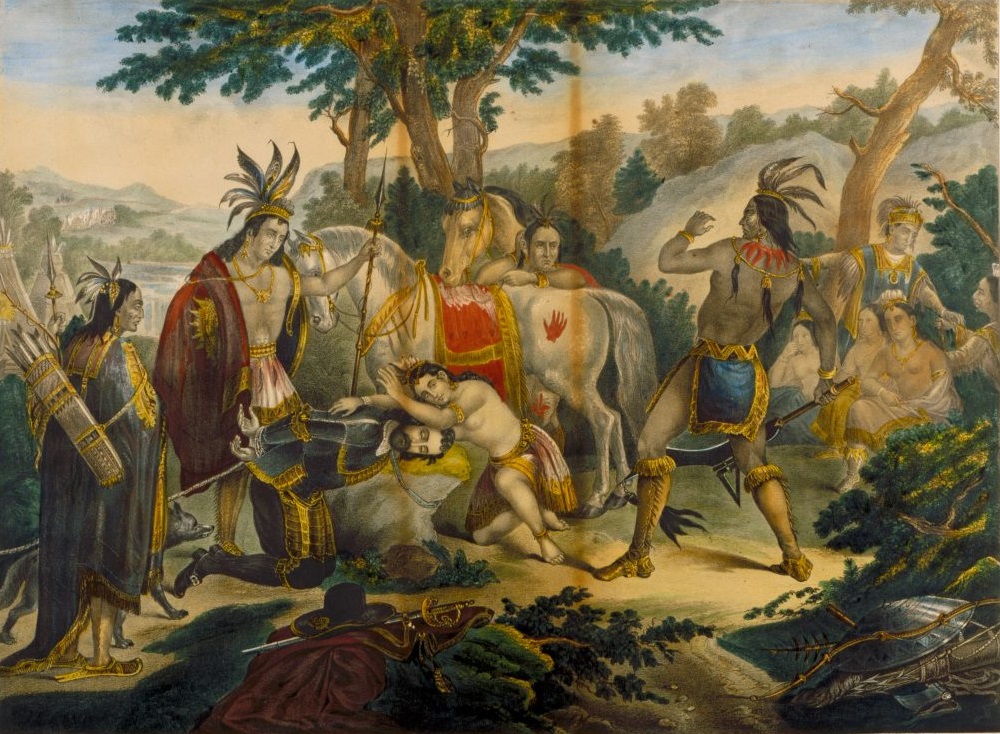In the summer of 1561, Spanish explorers abducted a Powhatan Indian youth from the Chesapeake Bay tidewater region and brought him to the royal court of Spain.
The kidnapping set off a chain of events that would alter the course of American colonial history.
The abduction itself wasn’t unusual, since the Spanish in America often trained Native youth to serve as interpreters, or pressed them for information about local peoples and perhaps the whereabouts of gold or silver.
But “Paquiquineo,” as Spanish officials rendered the young man’s name later that year, would in time re-emerge as Opechancanough, the most formidable warrior chief encountered by Europeans in 16th and early 17th century Virginia.
After returning to his homeland, he helped build the greatest chiefdom along the mid-Atlantic and spent the rest of his life defending his peoples from European invaders, whose mindset and strategies he had studied at close range.
A brilliant tactician and charismatic leader, he successfully thwarted Spanish efforts to establish a Chesapeake settlement. And 50 years later, with his coordinated 1622 attack on Jamestown colony, he came close to ending English colonial ambitions in the region.
But while he stands as one of the greatest military leaders in early America, his achievements remain almost completely unknown.
Virginia’s First Indian Wars
Initially, relations between the English and Powhatans (as the Indians were called) were friendly. Both sides were interested in trade—and the English were largely dependent on the Powhatans for food. But within a few years, relations had completely broken down.
Tired of ever-increasing demands for food from the English, Powhatan warriors began raids on Jamestown and several small garrisons that had recently been established along the James River.
These attacks quickly escalated into a full-scale war that nearly wiped out the English in 1610 before hundreds of well-armed soldiers, veterans of wars in Europe, arrived and carried out devastating counter-attacks.
Taking over from his brother, Opechancanough established himself as the chiefdom’s de facto ruler and began planning a long-term strategy to expel the English from his territories.
Opechancanough’s past experience with Europeans—he had been taken from Virginia by Spanish explorers while still a youth and spent ten years living in Spain and Spanish America—had taught him that there could be no accommodation with invaders on terms that would adequately recognize the Powhatans’ way of life, values, and beliefs.
As hundreds flooded into the colony taking up lands all along the James River Valley, he feigned friendship with the newcomers, biding his time for the right moment to put his plan into action. That plan involved a simultaneous attack that would be so overwhelming that the English would be unable to send warnings to other plantations.
The Massive 1622 Attack on Jamestown
The attack was launched on the morning of March 22, 1622, led by elite forces from Opechancanough’s own people, the Pamunkeys.
They were joined by warriors of other James River chiefdoms who had suffered greatly in the first war—the Powhatans, Arrohattocks, Appomattocs, Weyanocks, Chickahominies, Quiyoughcohannocks, Warrascoyacks, and Nansemonds.
Supported furthermore by Kiskiacks from the York River and the Rappahannocks, as well as several hundred mercenaries, the total number of warriors was likely somewhere between 1,400 and 1,600.
Following the first waves of attacks, larger running groups of warriors, anywhere from fifty to several hundred, joined the fighting to finish off survivors and burn settlements. Applying tactics used by the English in the first war, warriors destroyed buildings, equipment, and livestock in attacks on property as well as people.
By mid-morning, a bird’s eye view would have shown sheets of flames consuming houses and out-buildings and dense columns of smoke billowing up from burning plantations, wharves, and boats. Dozens of men would have been seen grappling in desperate hand-to-hand combat and scores of Indians running towards the fighting, throwing themselves upon the English and killing them in their homes, fields and yards.
Opechancanough did not expect a single day’s attack, even such a well-executed one, would succeed in expelling the English straight away. A general withdrawal would probably take a few months and possibly much longer. At no point did he consider seriously the possibility of living alongside the English as a separate but equal people; neither did he believe in a policy of containment, confining the English in Jamestown and other specific places. War was a contest for mastery of the land in which the winner would take all.
The English Kept Coming
The great attack and succeeding long years of hostilities against the English were in vain. Opechancanough could not save his people or his chiefdom from the sheer numbers of arrivals who flooded into the colony during the 1630s and 1640s.
Following his capture and death in 1646, shot in the back by a soldier at Jamestown, resistance was broken and the once great Powhatan chiefdom collapsed. Yet Opechancanough’s resistance to subjection stalled English expansion in Virginia and he came closer than any of his peers to defeating European colonizers and ridding them from his lands. He was, as he once described himself, “a great Captain, and did always fight.”
Continuing the fight until he was nearly a hundred years old, he was undoubtedly one of the greatest military leaders in early American history.
Sources:
Adapted from A Brave and Cunning Prince: The Great Chief Opechancanough and the War for America by James Horn.









%20has%20found%20more%20than%201,000%20galaxies%20mysteriously%20resembling%20our%20own%20Milky%20Way%20hiding%20out%20in%20the%20early%20universe..jpg)





